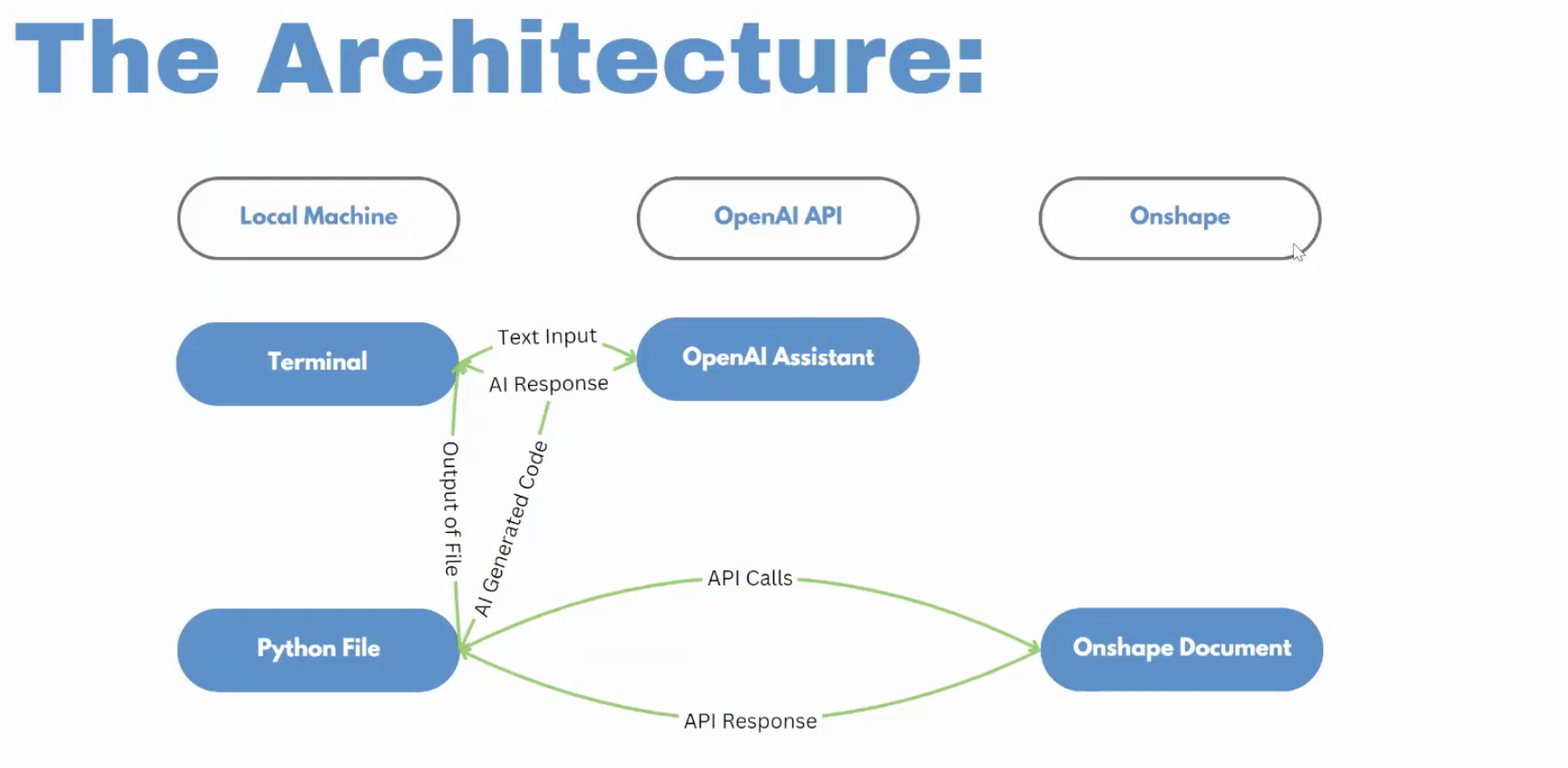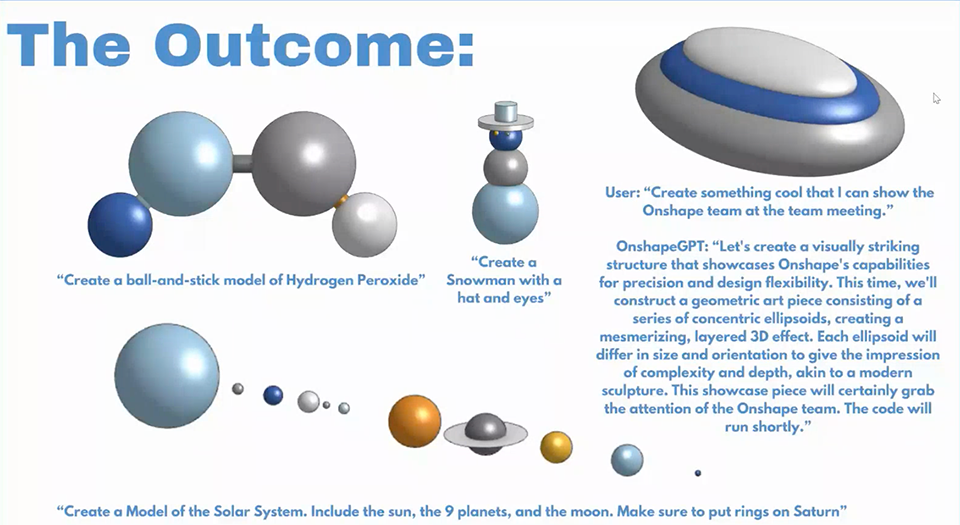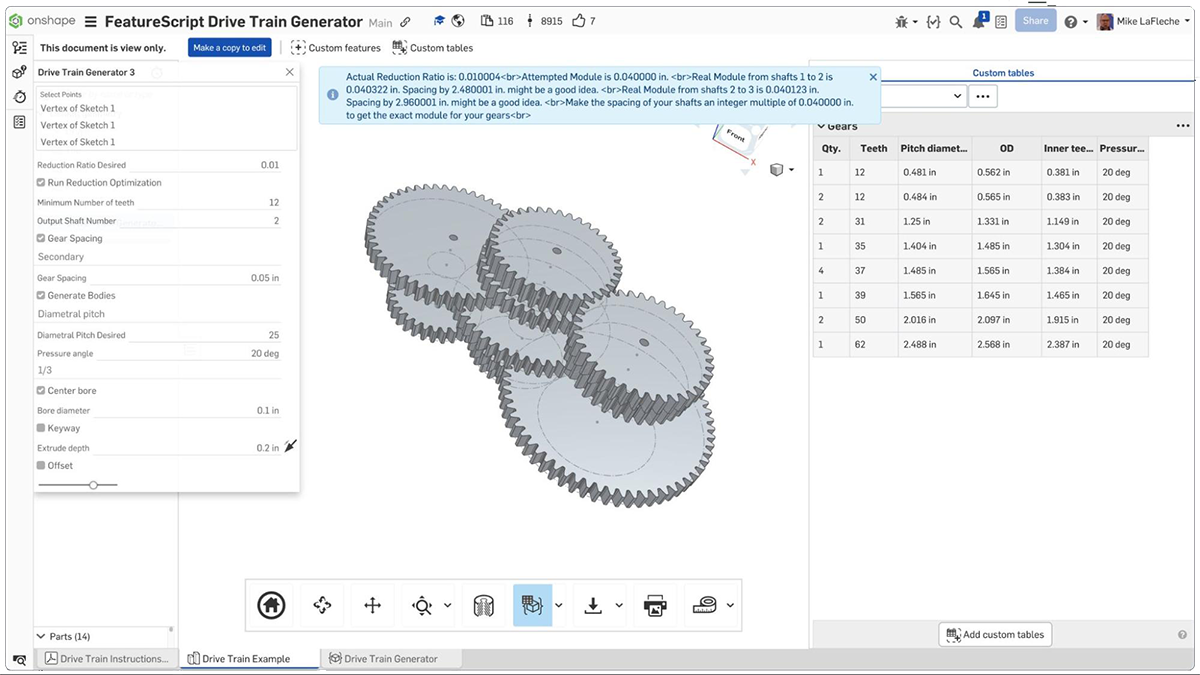As an undergraduate mechanical engineering student at Tufts University, Chris Tilton embarked on an intriguing research project: to explore the integration of CAD software with artificial intelligence (AI).
He began by answering a simple question: “Can Onshape work with AI?”
Tilton’s curiosity was sparked when Professor Chris Rogers invited students to investigate the possibility of using CAD software with ChatGPT, an AI language model developed by OpenAI and unaffiliated with PTC.
With Rogers’ guidance, Tilton set out to create a chatbot capable of interacting with Onshape, the PTC's cloud-native CAD and PDM platform, to create, edit, and delete geometry.
Leveraging Onshape’s FeatureScript and API
Tilton, who was also working as an intern on PTC’s Onshape team at the same time, explained that Onshape’s unique position, with its FeatureScript programming language and API (Application Programming Interface), made it an ideal candidate for this exploration.
Onshape FeatureScript is a domain-specific programming language that allows users to create custom features, while Onshape’s API enables the integration of Onshape with other software and applications.
By using these tools, Tilton developed a chatbot that could produce simple geometries within Onshape based on text prompts. For instance, when given the prompt “Create Newton’s cradle model with 5 balls, strings coming out of the top, and an a-frame to tie it all together,” the chatbot would generate Python code that sends API calls to Onshape, ultimately creating the desired geometry.
The Process Behind the Scenes
Tilton’s setup involved his local machine taking a text input and sending it to an AI assistant trained on instructions he wrote. This assistant would then generate Python code to create the specified geometry in Onshape. The code would be executed on Tilton's computer, sending API calls to Onshape and actualizing the geometry within the CAD environment.

While the geometries created during this initial exploration were relatively simple, Tilton emphasized the potential for more complex and practical applications.
“Even with similar prompts, it’s creating different geometry, and this really is something that could be utilized in the future for a legitimate mechanical CAD use case,” he said. “Because of the way that I’ve built it, it’s a training network, so you can program in different features. You can train the AI on existing models or figure out this is code that needs to be generated to create this complex model.”

Potential Use Cases in Education and Industry
Tilton envisioned two primary areas where text-to-CAD technology could prove valuable: education and product development industry.
In the educational realm, Tilton suggested that this tool could spark interest in CAD among younger students.
“Third-graders aren’t going to be interested in dimensioning and sketching and extruding,” he said. “But if you can type in, ‘Hey, make me a snowman that I can then 3D print and have it in real life,’ that would be a great way to get younger people involved in CAD.”
As for industrial applications, Tilton acknowledged that while the current iteration might not replace human designers, a more advanced version could act as a powerful assistant.
“If there were a version that could use all of the capabilities of Onshape, I think it would act more as a helper,” he explained. “If you need to create multiple features that are parametric with one another and you want to just give that as an input, it could potentially do all those calculations so that the user doesn't have to.”
Tilton cited the gear train example, where the user could provide specifications like gear ratios and axle spacing, and the AI-powered tool could generate the corresponding geometry with custom features and calculations.

The Future with Onshape
Tilton’s dedication and passion for Onshape have paid off, as he will be joining the company's rotational program after graduation. The program will provide him with a well-rounded experience, exposing him to various aspects of the business and allowing him to contribute his skills and knowledge to the Onshape team.
As Tilton reflects on his journey, he recognizes the value of his mechanical engineering background and the critical thinking skills it has fostered.
“Engineers just know how to think,” he said. “If you look at the people who are leading a lot of the top companies in the world, even if they’re not in an engineering role, somewhere along the line, so many of those people are engineers.”
The exploration of integrating AI with CAD software is still in its early stages, but Tilton’s work has demonstrated the potential for groundbreaking applications. As technology continues to advance, the fusion of AI and CAD may reshape the way we approach design, opening up new possibilities for innovation and collaboration between humans and machines.
PTC Internships
PTC's Onshape team is looking for passionate, innovative students to join our global internship programs.







